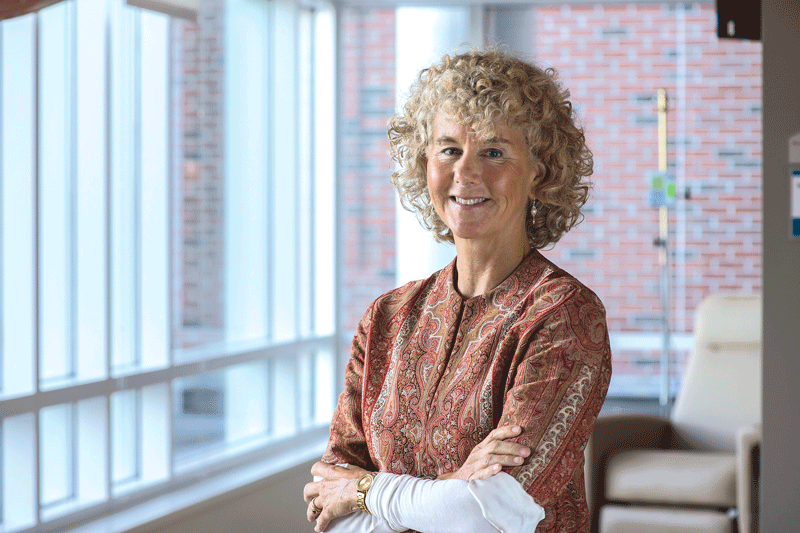Girls’ Poor Body Image Can Have Long-term Effects
While the accepted ‘ideal’ of female beauty has changed a great deal over the centuries, it’s safe to say today’s media images have set some fairly unrealistic expectations.
For example, notes Dr. Margo Maine in her book Body Wars, the average American woman is 5’4” tall and weighs 140 pounds, but the average American model is 5’11” tall and weighs 117 pounds. In fact, models of a generation ago weighed 8{06cf2b9696b159f874511d23dbc893eb1ac83014175ed30550cfff22781411e5} less than the average woman; these days, the average model weighs 23{06cf2b9696b159f874511d23dbc893eb1ac83014175ed30550cfff22781411e5} less.
Partly inspired by Maine’s research, Galia Slayen, a Hamilton College student who once battled an eating disorder, recently constructed a lifesize model of a Barbie doll, with all her physical proportions intact. The result was freakish. “If Barbie were an actual woman, she would be 5’9” tall, have a 39-inch bust, an 18-inch waist, 33-inch hips, and a size 3 shoe,” Slayen wrote in the Huffington Post.
All that would be supported by overlong, pencil-thin legs on a 110-pound frame, resulting in a body-mass index of 16.24, well within the range for anorexia. “She’d have to walk on all fours due to her proportions.”
Yet, these images — from Barbie dolls to super-thin celebrities and models — are what girls are exposed to from a very young age. Combined with girls’ natural tendency to compare their appearance to that of their peers, such beauty ideals, in all too many cases, throw another roadblock in the way of self-esteem and a positive self-image.
Citing statistics from the National Institute on Media and the Family, Dr. Gaurav Chawla noted that “53{06cf2b9696b159f874511d23dbc893eb1ac83014175ed30550cfff22781411e5} of 13-year olds have poor satisfaction with their body, and as they grow, by the time they are 17, almost 80{06cf2b9696b159f874511d23dbc893eb1ac83014175ed30550cfff22781411e5} have poor satisfaction from that. It’s highly prevalent.”
Media-driven standards of beauty tell only part of the story, said Chawla, medical director of Child and Adolescent Services at Providence Behavioral Health Hospital.
“The print media and its influence is controversial,” he noted, but added that research into this area — which includes articles about beauty and thinness accompanied by photos of models has been inconclusive about the severity of its effect on young women. “But TV, movies, and commercials, which bombard teenagers with bodyimage ideals of thinness, do seems to have an impact on them.”
Other factors include parental attitudes toward body image and peer pressure to conform to certain standards of appearance. “Interestingly, teasing by male peers seems to have a greater negative effect than teasing by girl peers,” Chawla said, adding that it’s usually a combination of influences driving a poor self-image.
“We look at factors like dieting and preoccupation with thinness, teasing about body shape and weight, co-morbidities with a psychiatric diagnosis, media pressures to be thin, and a family history of eating disorders,” he noted.
“The consensus is that girls are more vulnerable, more prone to developing body-image problems — and their subsequent complications — than males.”
“We say, ‘you look good’ when somebody has lost weight, but somehow the result is that the idea of thinness has gotten disconnected from health, healthy habits, and healthy weight.”
Media Messages
That’s not to say the media isn’t a significant factor. According to a Kaiser Foundation study reported by the National Institute on Media and the Family, 58{06cf2b9696b159f874511d23dbc893eb1ac83014175ed30550cfff22781411e5} percent of female characters in movies had comments made about their looks, as did 28{06cf2b9696b159f874511d23dbc893eb1ac83014175ed30550cfff22781411e5} in television shows and 26{06cf2b9696b159f874511d23dbc893eb1ac83014175ed30550cfff22781411e5} of the female models in TV commercials. Mens’ and boys’ appearance is talked about significantly less often in all three media: such comments were made about 24{06cf2b9696b159f874511d23dbc893eb1ac83014175ed30550cfff22781411e5} of male characters in movies, 10{06cf2b9696b159f874511d23dbc893eb1ac83014175ed30550cfff22781411e5} on TV shows, and 7{06cf2b9696b159f874511d23dbc893eb1ac83014175ed30550cfff22781411e5} in commercials.
Meanwhile, 37{06cf2b9696b159f874511d23dbc893eb1ac83014175ed30550cfff22781411e5} of articles in leading teen girl magazines also included a focus on appearance, and 50{06cf2b9696b159f874511d23dbc893eb1ac83014175ed30550cfff22781411e5} of the advertisements used an appeal to beauty to sell their products.
Catherine Steiner-Adair, an educator and author who works with girls and parents and speaks about body image and eating disorders in workshops around the country, recommends several strategies to help girls develop positive body images and healthy eating and exercise habits — and to resist some of the culture’s more negative messages.
She believes an overemphasis on appearance begins at babyhood, when the typical pink color scheme (as opposed to blue for boys) reinforces gender-based expectations of how girls should behave and what should interest them. “Adults respond so much to what a girl looks like that, by age 5 or 6, young girls are getting the notion that their body is their selling point,” she told PBS. “When body image, clothes, and marketing for girls is so sexual, it is that much harder for girls to develop a healthy, non-sexualized relationship with their bodies.”
Steiner-Adair doesn’t recommend banning girls’ exposure to media, but limiting it — particularly commercials and using images and messages as an opportunity to talk about how media messages create certain ideals and how girls can balance their effects. She recommends that parents talk with and compliment their daughters about who they are, not how they look. “Parents so often say, ‘you look so pretty today,’ but don’t say things like, ‘you were such a good friend today,’ or ‘you handled that frustration well,’” she noted.
Chawla noted that even conversations about health and fitness should avoid explicit appeals to good looks, and aim instead at more important reasons to eat well and be fit.
“We talk so much about weight in isolation from healthy habits,” he said. “In our normal conversations at home, with our friends, with our children, there isn’t that connection made between being healthy and having a healthy weight as the goal. Instead, it’s having right pants size or dress size, or who looks good.
“Think of the way we compliment each other,” he continued. “We say, ‘you look good’ when somebody has lost weight, but somehow the result is that the idea of thinness has gotten disconnected from health, healthy habits, and healthy weight.”
Critical Condition
With about 1,000 deaths annually directly attributable to anorexia, poor body image — which is often intertwined with depression and other behavioral-health issues as well as contributing to binging and/or restrictive eating — is a serious public-health concern, Chawla said.
He said society — and that includes parents, schools, and the media needs to be more focused on building girl’s self- esteem, and for reasons that have nothing to do with appearance. Clearly, self-image is a problem for the more than 5 million Americans with eating disorders, 90{06cf2b9696b159f874511d23dbc893eb1ac83014175ed30550cfff22781411e5} of them women, according to the National Institute of Mental Health.
But young people, Chawla said, “place less importance on peer acceptance and peer-influenced messages of physical beauty if their self-esteem is uplifted, and that has been shown to have significant and lasting improvements in eating habits and the general satisfaction they have with their body.
“I think that’s where schools and healthcare providers can be helpful, too,” he added, “when the programs are focused on self-esteem more than instructions about what eating disorders are and what various eating-disordered behaviors are. By doing the latter, we inadvertently almost normalize or glamorize eating disorders or give information that may predispose them to what we call pre-eating-disorder behavior.”
Like Steiner-Adair, Chawla said parents need to move away from a focus on\ looks, which many are guilty of without realizing it.
“I think that’s the basic shift in paradigm that we have to consciously bring about in our conversations, in our attitudes, so our kids hear us talk about healthy habits, healthy diet, a healthy activity level, and people being beautiful for the personalities they have, our children getting compliments on the basis of their personality traits and character,” he told HCN.
“Of course we could say they are beautiful,” he added, “but that should not be the only way we compliment people and children. That would be one way, at home, we can change this.”





Comments are closed.